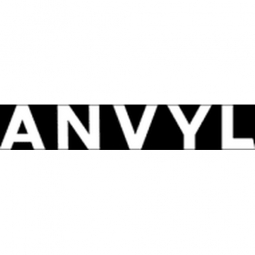下载PDF
More Time = More Money How COOLA Improved Margins and Efficiency with Anvyl
技术
- 功能应用 - 企业资源规划系统 (ERP)
- 应用基础设施与中间件 - 数据交换与集成
- 功能应用 - 远程监控系统
适用行业
- 消费品
- 零售
适用功能
- 采购
- 商业运营
- 物流运输
用例
- 库存管理
- 供应链可见性(SCV)
- 补货预测
- 远程资产管理
服务
- 系统集成
- 软件设计与工程服务
挑战
Before Anvyl, COOLA’s supply chain information was fragmented. Purchase orders (POs) were created and emailed to suppliers, order statuses were manually tracked in spreadsheets, and important updates were communicated across multiple channels. Every change or revision to a purchase order – which happened 70% of the time – had to be manually updated across many systems, including their NetSuite ERP provider. For a company that issues more than 1,000 orders per year, shares over 5,000 files, and manages nearly 2,000 tasks, this inefficient approach took a toll on the team.
关于客户
COOLA is a popular skincare and suncare brand based in Carlsbad, California. The brand is known for its commitment to clean, eco-conscious products that promote health and happiness. COOLA has garnered a loyal customer base globally, thanks to its high-quality offerings. However, as the company scaled, it faced significant challenges in its supply chain management, which threatened its ability to meet growing demand efficiently.
解决方案
While NetSuite is a best-in-class tool for managing day-to-day business activities, the truth is that most ERPs aren’t optimized for supply chain teams. This is where Anvyl comes in — bridging the divide between global supply chain teams, their suppliers, and their tech stack. In just 45 days, COOLA was up and running with their Anvyl x NetSuite integration. The integration allowed COOLA to centralize communication, improve collaboration, and enhance alignment throughout the order process. This transformation enabled COOLA to manage the same workload with significantly fewer staff, strengthen supplier relationships, and reduce the number of purchase order changes.
运营影响
数量效益
相关案例.
.png)
Case Study
Improving Vending Machine Profitability with the Internet of Things (IoT)
The vending industry is undergoing a sea change, taking advantage of new technologies to go beyond just delivering snacks to creating a new retail location. Intelligent vending machines can be found in many public locations as well as company facilities, selling different types of goods and services, including even computer accessories, gold bars, tickets, and office supplies. With increasing sophistication, they may also provide time- and location-based data pertaining to sales, inventory, and customer preferences. But at the end of the day, vending machine operators know greater profitability is driven by higher sales and lower operating costs.

Case Study
Improving Production Line Efficiency with Ethernet Micro RTU Controller
Moxa was asked to provide a connectivity solution for one of the world's leading cosmetics companies. This multinational corporation, with retail presence in 130 countries, 23 global braches, and over 66,000 employees, sought to improve the efficiency of their production process by migrating from manual monitoring to an automatic productivity monitoring system. The production line was being monitored by ABB Real-TPI, a factory information system that offers data collection and analysis to improve plant efficiency. Due to software limitations, the customer needed an OPC server and a corresponding I/O solution to collect data from additional sensor devices for the Real-TPI system. The goal is to enable the factory information system to more thoroughly collect data from every corner of the production line. This will improve its ability to measure Overall Equipment Effectiveness (OEE) and translate into increased production efficiencies. System Requirements • Instant status updates while still consuming minimal bandwidth to relieve strain on limited factory networks • Interoperable with ABB Real-TPI • Small form factor appropriate for deployment where space is scarce • Remote software management and configuration to simplify operations

Case Study
How Sirqul’s IoT Platform is Crafting Carrefour’s New In-Store Experiences
Carrefour Taiwan’s goal is to be completely digital by end of 2018. Out-dated manual methods for analysis and assumptions limited Carrefour’s ability to change the customer experience and were void of real-time decision-making capabilities. Rather than relying solely on sales data, assumptions, and disparate systems, Carrefour Taiwan’s CEO led an initiative to find a connected IoT solution that could give the team the ability to make real-time changes and more informed decisions. Prior to implementing, Carrefour struggled to address their conversion rates and did not have the proper insights into the customer decision-making process nor how to make an immediate impact without losing customer confidence.

Case Study
Digital Retail Security Solutions
Sennco wanted to help its retail customers increase sales and profits by developing an innovative alarm system as opposed to conventional connected alarms that are permanently tethered to display products. These traditional security systems were cumbersome and intrusive to the customer shopping experience. Additionally, they provided no useful data or analytics.







